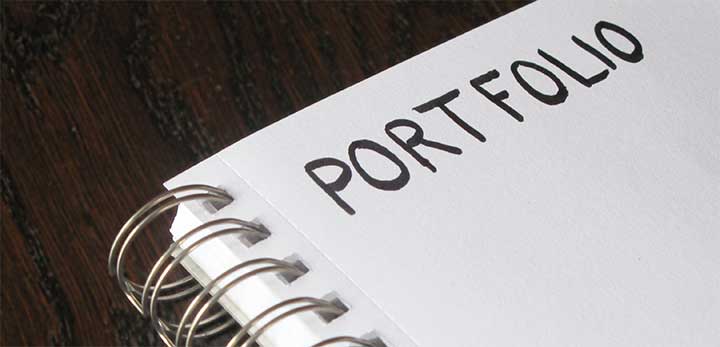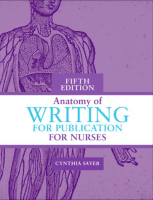What is a professional portfolio? Let’s start with what it is not. It’s not a résumé or curriculum vitae (CV).
Think of it this way: A résumé or CV is a summary of your skills, achievements, and professional experience.
A professional portfolio is the evidence of your skills, achievements, and professional experience. Your résumé may note that you developed a patient-care plan. Your professional portfolio will contain the actual plan.
Actually, portfolios come in two varieties. A Growth and Development portfolio is your main portfolio. It holds all evidence of your education and achievements and is for your eyes only.
A Best Work portfolio or Profile is a collection of materials you select from your Growth and Development portfolio for review by others for a specific purpose, such as a promotion or an award.
How do I use my portfolio?
You’ll use your professional portfolio to plan your continuing education and professional development. You can also use your portfolio to market yourself. When applying for a career-ladder promotion, a new position, or admission to an education program, review your portfolio and select the appropriate materials for submission. You can do the same when you think you deserve an award or other recognition. Several professional associations are either using portfolios for certification or developing a plan to do so. Also, several states have considered or are considering requiring a professional portfolio for re-licensure. So you may be using your portfolio to select evidence for these purposes, as well.
What belongs in my portfolio?
Try to put objective documentation in your portfolio. Examples include certificates of attendance for continuing education programs, diplomas for formal education, letters of appreciation for your contributions to a committee or board, and copies of protocols, procedures, clinical pathways, and patient-education plans you developed. Include your written personal philosophy of nursing, too.
Obtain copies of your transcripts from each college and university you have attended and put them in your portfolio. Always save the certificates that you receive when you complete continuing education programs and keep a running list of in-service attended. Because you don’t usually get a certificate for in-services, either keep a running list or copy your in-service record at least every 6 months for your portfolio.
Consider how you will document your contributions at work. Each time your job description changes, file a copy in your portfolio. Keep copies of your annual completed skills checklists and your annual evaluations, too. If you’ve been a preceptor or mentor, keep a list of nurses you’ve taught and specifics on how you aided their professional development. Maintain summaries of patient cases in which you played a significant role.
If you’ve made professional presentations, keep any written materials, such as the brochure, the handout, the evaluation summary, and letters of appreciation. Consider having your presentation videotaped for your review and self-evaluation.
Keep copies of articles you’ve published along with the complete citation. If you did a poster presentation, keep a copy of the brochure or proceedings book with the poster title and your name—and have someone take a photo of you with your poster at the professional meeting. If you’ve been awarded grant funds for a project or research study, keep evidence of the grant award, a description of your contribution, and an abstract describing the study.
Write and file an annual self-assessment of your career goals and achievements. Record your goals for the next year and for 5 years ahead. Each year, do an evaluation of your progress toward your goals and develop a new plan. Your portfolio can play an important role in your professional development if you use it to reflect on what you want and how you’ll achieve it.
How should I organize my portfolio?
You can organize your portfolio in a three-ring binder with index tabs early in your career; a file drawer or file box with folders, as your career progresses; or an e-portfolio containing electronic folders and files on your computer at any point in your career.
How should I submit my portfolio?
When submitting items from your portfolio for review, consider which ones are most relevant for the position, promotion, or recognition you’re seeking. Make copies of these documents and organize them in a binder with tabs. You might also want to send the portfolio as e-mail attachments, or you might e-mail only your CV and send the binder with supportive documents by regular mail. Make sure you’re not sharing any confidential information.
Start collecting
Begin as early as possible in your career to collect materials for your portfolio. Remember, the materials you collect for your professional portfolio should be evidence of your competencies, proficiencies, and expertise. Remember, too, your portfolio should demonstrate your ongoing achievements. If you already have a portfolio, keep it up to date. If you don’t have a portfolio, put down the journal, and start one now.
Selected references
Bell SK. Professional nurse’s portfolio. Nurs Adm Q. 2001;25(2):69-73.
Cayne JV. Portfolios: a developmental influence? J Adv Nurs. 1995;21(2):395-405.
Oermann M. Developing a professional portfolio in nursing. Orthop Nurs. 2002;21(2):73-78.
Robin Donohoe Dennison, RN, DNP, CCNS, is Assistant Professor of Clinical Nursing at the University of Cincinnati College of Nursing in Cincinnati, Ohio.



















2 Comments.
Interesting. So when you’re submitting a CV, is it normal to submit a professional portfolio along with it?
After reading this article, I felt somewhat deflated. I was going to apply for CN 3 at my current job but there are so many things I still need to do based on this article. I have been a nurse since 1985 transitioned from L.V.N. to R.N.-B.S.N. I have just been working as a regular charge nurse and preceptor all this years. I just recently received my R.N.-M.N.N. certificate. I have worked in so many hospitals and never really kept up with my certificates. I don’t even know where to start with my portfolio or if it is even worth it now. Thanks for the information.